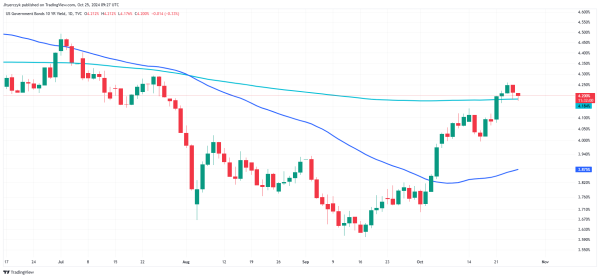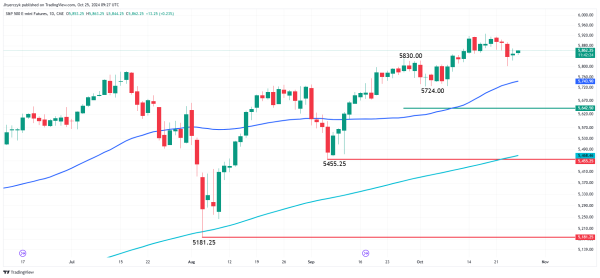Stocks Face Pressure: Will Rising Treasury Yields Continue to Cap Market Gains?
Election, Data Push Yields Higher, Capping Stock Gains
The U.S. election and new economic data are pushing Treasury yields higher, making investors cautious about stock market returns. This trend reflects growing uncertainty about the direction of federal spending, debt, and inflation expectations, all of which are crucial for bond and equity markets alike.
Treasury Yields and Election Uncertainty

As the U.S. gears up for a high-stakes presidential election, analysts are warning that policies proposed by both major candidates could contribute to rising Treasury yields. The 10-year Treasury yield recently reached 4.26%, its highest since mid-July, suggesting that investors expect significant long-term borrowing needs and potential inflationary pressures.
According to forecasts, a Republican win with control of Congress could drive yields up another 40 basis points to 4.6%, while a Democratic sweep is projected to add 20 basis points. Even a split Congress would likely result in some upward pressure, reflecting expectations for larger government spending and tax policy changes.
For example, Donald Trump’s proposed tax cuts are expected to push national debt even higher, while Vice President Kamala Harris has her own plans for large-scale spending programs. This expected increase in borrowing makes government bonds riskier, meaning investors will demand higher yields.
Economic Data and Market Impact
New economic data due today will also shape yield expectations and stock market sentiment. Durable goods orders, for example, are expected to show a 0.5% drop in September after flatlining in August. Orders for core goods—excluding transportation—are predicted to decline by 0.1%. The data suggests that economic growth may be softening, especially in key manufacturing sectors, raising concerns about whether the economy can sustain strong growth under current conditions.
On the consumer front, the University of Michigan’s Consumer Sentiment Index is anticipated to inch up to 69.0. This modest improvement indicates that consumers are slightly more optimistic, though not dramatically so. Inflation expectations over the next year remain steady at 2.9%, but with higher Treasury yields, the cost of credit for both consumers and businesses could dampen further economic growth.
Why This Matters for Investors

Higher Treasury yields generally translate to increased borrowing costs across the economy, impacting mortgages, auto loans, and corporate credit. For stock investors, rising yields often signal reduced risk appetite, as bonds become a more attractive option than equities. This week, the S&P 500 is on track to decline nearly 1%, reflecting this cautious stance among investors.
Higher yields are also being driven by concerns over the U.S. national debt, which now exceeds $35 trillion. Recent comments by billionaire investor Paul Tudor Jones highlight the market’s growing unease with the government’s spending trajectory. Jones warned that the U.S. may be forced to “inflate its way out” of debt, a scenario that could drive inflation and bond yields even higher.
US Stock Market Outlook: Cautious with Further Upside for Yields
With election uncertainty and economic data underscoring inflation risks, the bond market is likely to see further upward pressure in yields. Short-term, traders are watching today’s durable goods and consumer sentiment data for signs of economic health. Long-term, the election’s impact on debt and spending will play a significant role in shaping yields and, consequently, stock market performance.